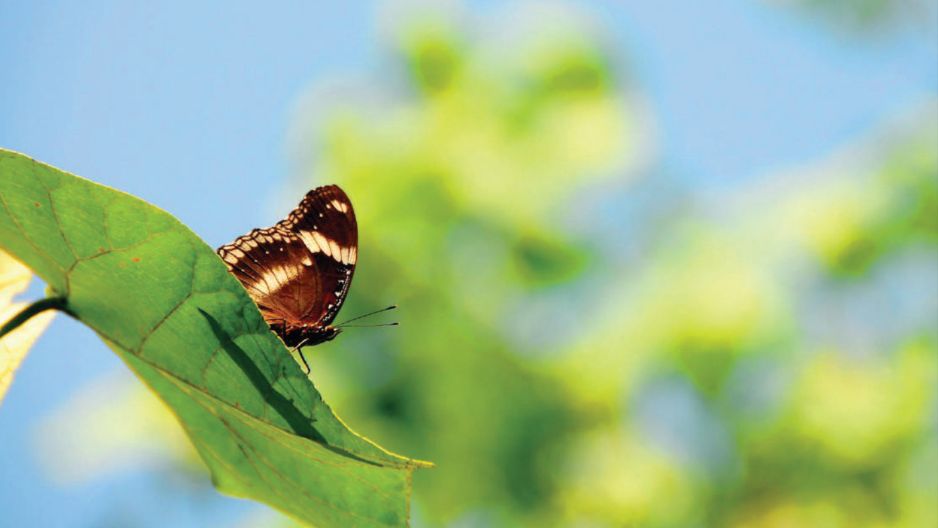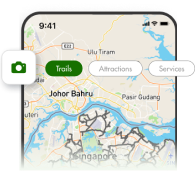National Biodiversity Strategy and Action Plan
Singapore's commitment to biodiversity conservation is embodied in our National Biodiversity Strategy and Action Plan (NBSAP), launched by NParks in 2009 and updated in 2019.
Titled “Conserving Our Biodiversity,” the NBSAP provides a framework to guide our efforts to conserve Singapore's rich biodiversity, keeping in mind the challenges of achieving this within a densely populated city-state and the need to balance development with conservation.
National Biodiversity Strategy and Action Plan (PDF, 6,496KB)
Outlines Singapore’s strategies and actions towards biodiversity conservation.
May 2019
The 5 strategies outlined in the NBSAP reflect the collective efforts of NParks and various stakeholders.
- Safeguard our biodiversity
- Consider biodiversity issues in policy and decision-making
- Improve knowledge of our biodiversity and the natural environment
- Enhance education and public awareness
- Strengthen partnerships with all stakeholders and promote international collaboration
Strategy 1: Safeguard our biodiversity
This strategy aims to conserve Singapore's habitats and ecosystems to ensure their long-term sustainability. It includes protecting native species, habitats and ecosystems, as well as re-establishing lost species.
Actions
- Implement species conservation and recovery programmes.
- Rehabilitate degraded areas.
- Extend green corridors to counter habitat fragmentation.
- Utilise parks to house or re-create ecosystems that have been lost.
Strategy 2: Consider biodiversity issues in policy and decision-making
This strategy aims to integrate biodiversity considerations into policy and decision-making processes, enhancing coastal management and biodiversity assessments.
Actions
- Integrate coastal management principles into administrative processes.
- Enhance biodiversity assessment capabilities.
- Strengthen access and benefit-sharing processes, to ensure that biodiversity conservation is considered.
Key initiatives
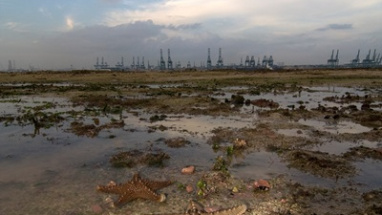
To address complex coastal resource uses, Singapore’s Technical Committee on Coastal and Marine Environment was set up. Comprising members from different agencies with a stake in the marine environment, the Committee adopts integrated management principles for a holistic approach in managing our coastal and marine resources.
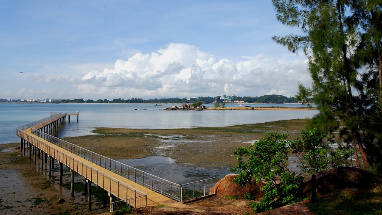
In 2001, Singaporeans came together to advocate for the preservation of Chek Jawa, an area with rich biodiversity which features five distinct intertidal ecosystems.
With plans for reclamation in the works, many Singaporeans felt so strongly about the natural heritage of Chek Jawa that they appealed to the government to seek alternative solutions.
The Singapore Government responded to these appeals. After considering the unique biodiversity and expert opinions, it decided to preserve Chek Jawa as long as it was not needed for development. Today, Chek Jawa remains a popular destination and a treasured part of our natural heritage.
Strategy 3: Improve knowledge of our biodiversity and the natural environment
Understanding how ecosystems respond to human activities is crucial for conservation. It is essential that we support taxonomic studies, document our biodiversity and conduct ecological research.
Actions
- Promote research on ecosystem and species conservation, biodiversity interactions, valuation studies and climate change impacts.
- Monitor ecosystem and species health as part of management.
- Develop and maintain a central information portal on biodiversity for informed decision-making.
- Maintain a list of species with conservation status (Red Data List).
- Compile case studies and assess best practices.
Key initiatives
The Red Data Book lists plant and animal species in Singapore that need better conservation efforts. It includes photographs, descriptions, reasons for rarity and recommendations for improvement.
The book, first published in 1994 and updated in 2008 and 2024, serves as a resource for planners, researchers and students to track species status and plan conservation actions. It highlights local differences from global conservation statuses, showing the importance of context in planning.
Find out more about the Red Data Book or view it online
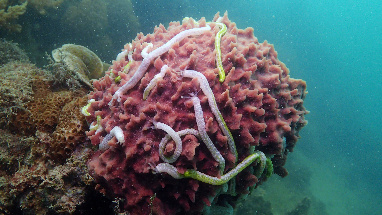
NParks collaborates with research institutions and interest groups to study, document and monitor Singapore’s marine biodiversity.
One example is a study with the National University of Singapore (NUS) on marine sponges which recorded over 100 species, of which more than 40 are new records for Singapore, and at least one is new to science. Marine sponges are essential to coral reef ecosystems, providing food, habitats, and potential pharmaceutical compounds. The study is now expanding to sub-tidal species.
Another project, the Singapore Mangrove Insect Project, surveyed 11 mangrove sites and found a surprisingly diverse insect population, including at least 10 new fly species. Conducted by the Royal Belgian Institute of Natural Sciences, NUS and NParks, this project highlights the ecological richness in Singapore’s urban environment.
Strategy 4: Enhance education and public awareness
Increasing knowledge and awareness is key to engaging the public in biodiversity conservation. This strategy aims to foster interest and pride in our natural heritage through effective communication.
Actions
- Increase Singaporeans' appreciation and understanding of nature through seminars, roadshows and events.
- Promote volunteerism through biodiversity interest groups.
- Integrate biodiversity conservation into educational curricula of all levels.
Key initiatives
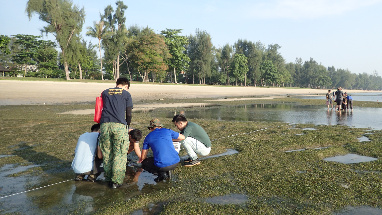
There are many ways to get involved in nature conservation, including volunteering as guides, participating in habitat monitoring and helping with reforestation.
Guided walks are offered at places like Sungei Buloh Wetland Reserve, Pulau Ubin, Kusu Island, and Pulau Semakau. These are organised by NParks and groups such as The Blue Water Volunteers, Lee Kong Chian Natural History Museum and Nature Society of Singapore.
For hands-on work, volunteers can join shoreline cleanups, such as the International Coastal Cleanup Singapore, which involves around 1,500 participants each year.
The public can also attend biodiversity seminars and workshops run by NParks and other groups, who also promote their work at events such as Earth Day and World Environment Day.
Find out more about volunteering with NParks
The “Wild Singapore” website, created by nature enthusiast Ria Tan, provides resources on Singapore’s nature areas, events, and volunteer opportunities. It features news, fact sheets and nearly 7,000 wildlife photos, available for free download.
The site has attracted nearly 800,000 visitors since 2007, showing growing public interest in nature. The affiliated “Wild Shores of Singapore” blog focuses on marine biodiversity.
More Singaporeans have also been speaking up about nature and environmental issues in recent years, signalling a growing awareness of nature conservation. This builds a community of people who care about and act on these issues.
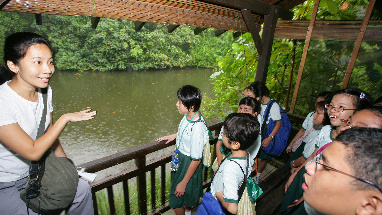
Launched in October 2006, the SUN Club programme aims to bring nature appreciation to students with special needs. The students get to visit Singapore's fascinating nature areas with trained guides. This helps the students connect with Singapore’s biodiversity and understand their critical role in the ecosystem.
Supported by Singapore Press Holdings Foundation, this project also involves the National Council of Social Service. The special schools were also consulted during the development of the programme.
Strategy 5: Strengthen partnerships with all stakeholders and promote international collaboration
Effective biodiversity conservation requires collaboration across sectors and borders. All stakeholders, including private, public and people sectors, must be engaged in a comprehensive partnership.
Such partnerships should also take place internationally as biodiversity issues transcend national boundaries.
Actions
- Engage all sectors to participate in environmental stewardship.
- Build partnerships with regional and international organisations, in particular the ASEAN Centre for Biodiversity and the Convention on Biological Diversity.
Key initiatives
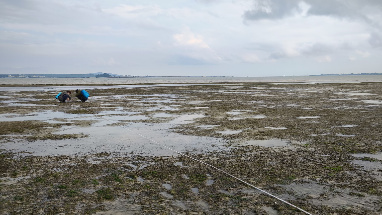
Seagrasses are vital to marine environments. TeamSeaGrass, established in November 2006, is a volunteer-based programme monitoring seagrass meadows.
Initiated by Seagrass-Watch HQ and NParks, it involves monitoring sites like Chek Jawa and Pulau Semakau. The programme includes partnerships with schools and companies such as Schering-Plough – a pharmaceutical company based at Tuas – to enhance seagrass conservation efforts.




